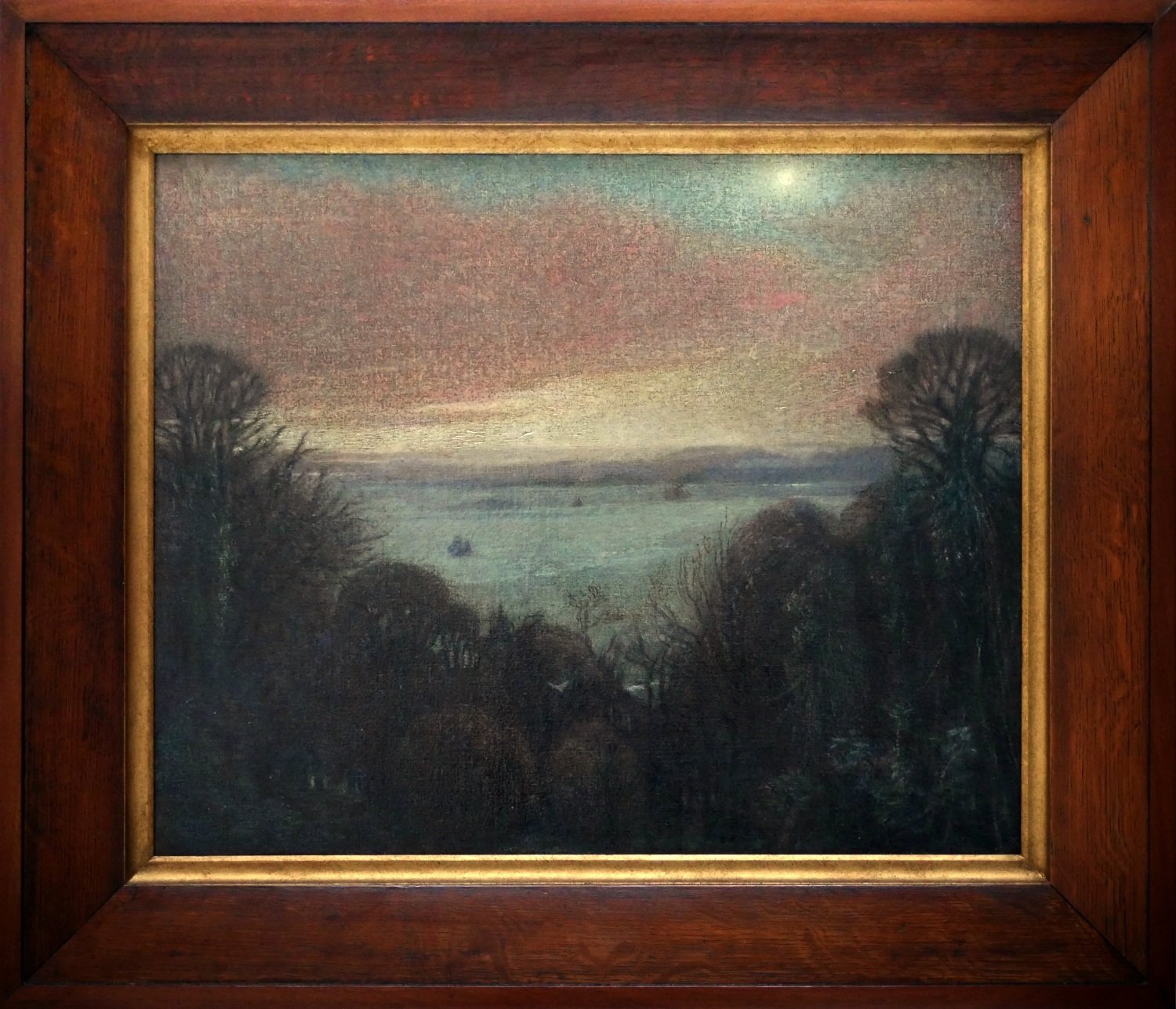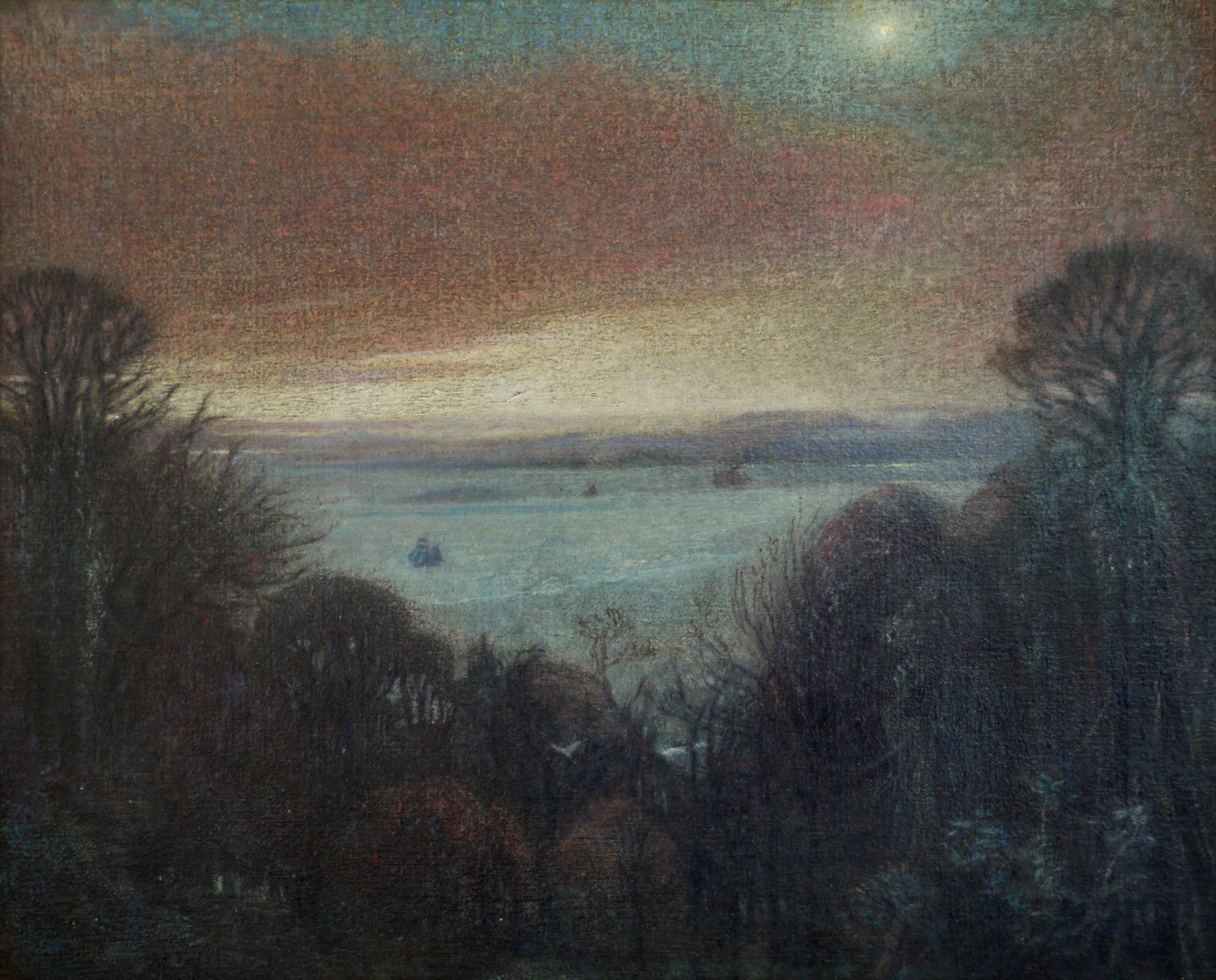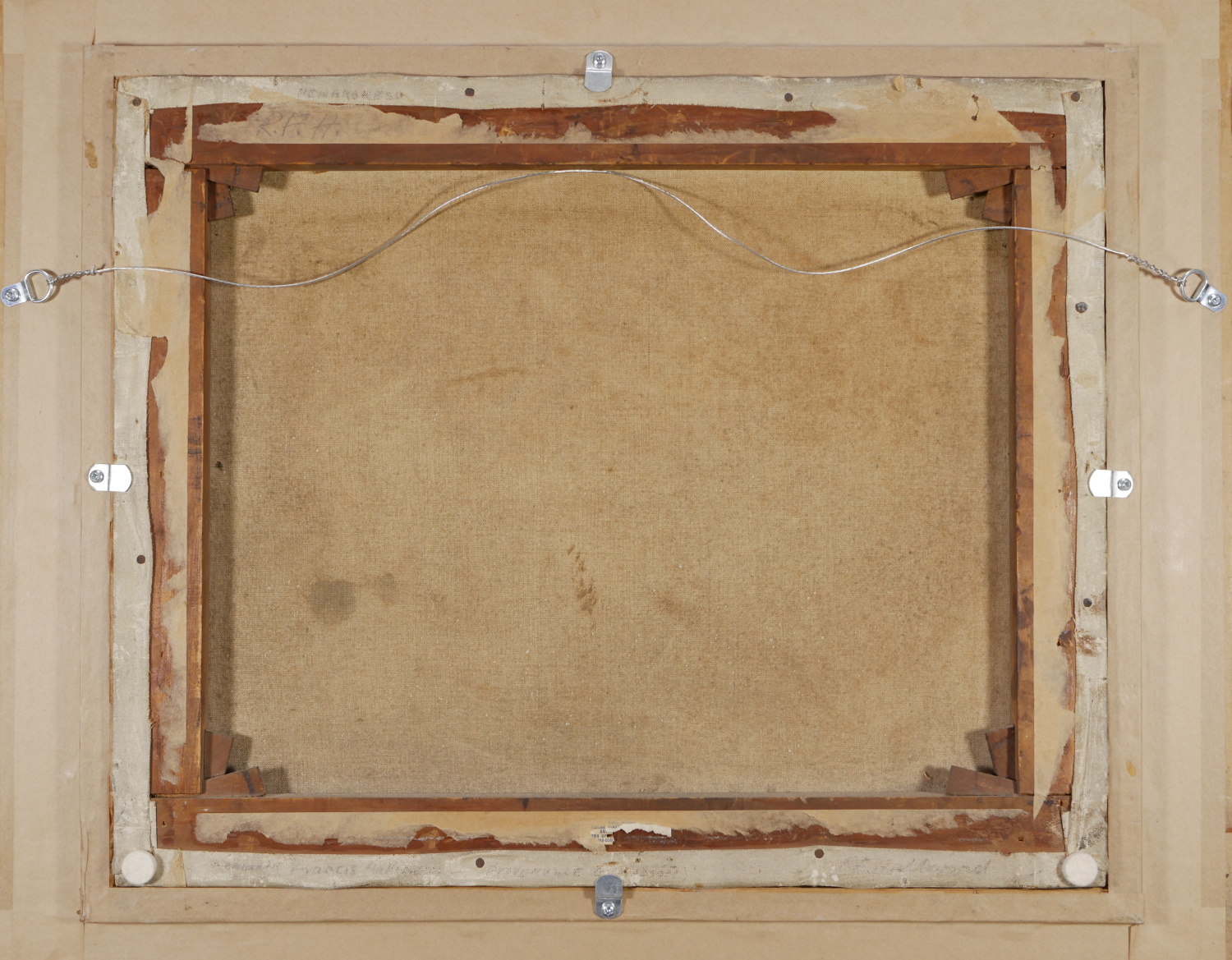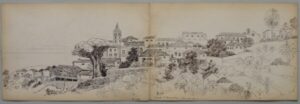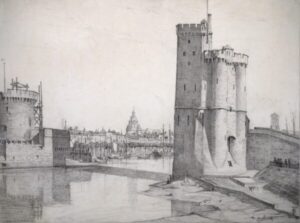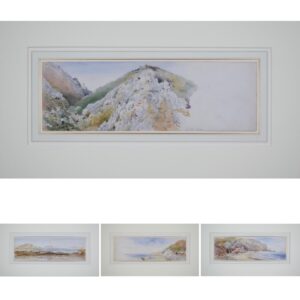Brand
Hallward, Reginald Francis (1858-1948)
Born in Sandown, Isle of Wight, on 18 October 1858, after a private education Reginald Hallward studied art at the Slade School of Fine Art, University College London, and at the Royal College of Art in London. In 1887 he married Adelaide Bloxam the artist, illustrator and writer of children's books. He was diverse, creative and free-ranging in his talents, we see him foremost as a painter of mystical landscapes, but probably his most concrete memorial is his work as a designer of stained glass. In the 1880s he trained with Christopher Whall at his workshop in Dorking, Surrey and later designed for him. He designed windows for many ecclesiastical buildings including; St. Mary Magdalene Church in Cobham, Kent (1903); St. Martin’s Church in Westmeston, East Sussex (1915); St. Peter and St. Paul’s Church in Shorne, near Gravesend in Kent (1925); and the American Military Cemetery in Brookwood, Surrey (1929). Two designs for stained-glass windows by Hallward are illustrated in ‘The Studio Yearbook of Decorative Art’ 1919 (p.104). Hallward also wrote articles on stained glass in ‘The Builder’ and other magazines. In the years after the First World War he designed sculptural War Memorials for cathedrals and churches in France, England and Canada.
Hallward founded the Woodlands Press principally to issue his own and his family's books and illustrated works, most notably, "Vox Humana" a series of six volumes of pictures and verses of which some eighty sets were published. He was a fine illustrator in the arts and crafts style especially with his black and white "scratchwork" which he re-introduced, he ran the press from his house at Shorne, near Gravesend in Kent. Among books published by the Woodlands Press were ‘The Religion of Art’ (1899), written and illustrated by Reginald Hallward and ‘The Baby’s Quest’ (1913), written and illustrated by his wife, Adelaide Hallward. Until the end of his life Hallward painted landscapes in oil, and in doing so recorded the different places where he lived - the later landscapes are of Merioneth and Pembroke where he spent the last years of his life. However even in his landscapes which are identified views one would be disappointed to look for any kind of topographical literalness. With or without figures his paintings derive from his own vision of a mythic countryside rather than any direct experience or observation of the landscape. The constituents of Hallward's landscape are symbolic rather than naturalistic and their overall impact is more telling than their details. He was well regarded in his day and formed friendships with the avant-garde including Oscar Wilde and James Guthrie (of the Pear Tree Press) who was, at one time, his studio assistant and became a life long friend and promoter of his work. Hallward gave Oscar Wilde the idea for Dorian Grey.
A number of exhibitions of his work took place at the Rowley Gallery and especially at the Dowdeswell Gallery, including a major exhibition there in 1913. He exhibited at the New English Arts Club, the Arlington Gallery, the Grosvenor Gallery, the Royal Institute of British Artists in London, the Walker Art Gallery in Liverpool, and at the Royal Society of British Artists. More recently, an exhibition of his work (and of his close family) was held at the Christopher Wood Gallery in May 1984. He lived at Shorne, near Gravesend in Kent; 13 Hogarth, Kensington, London; and for many years at Arthog in Merionethshire, Wales. He died on 30 March 1948.
